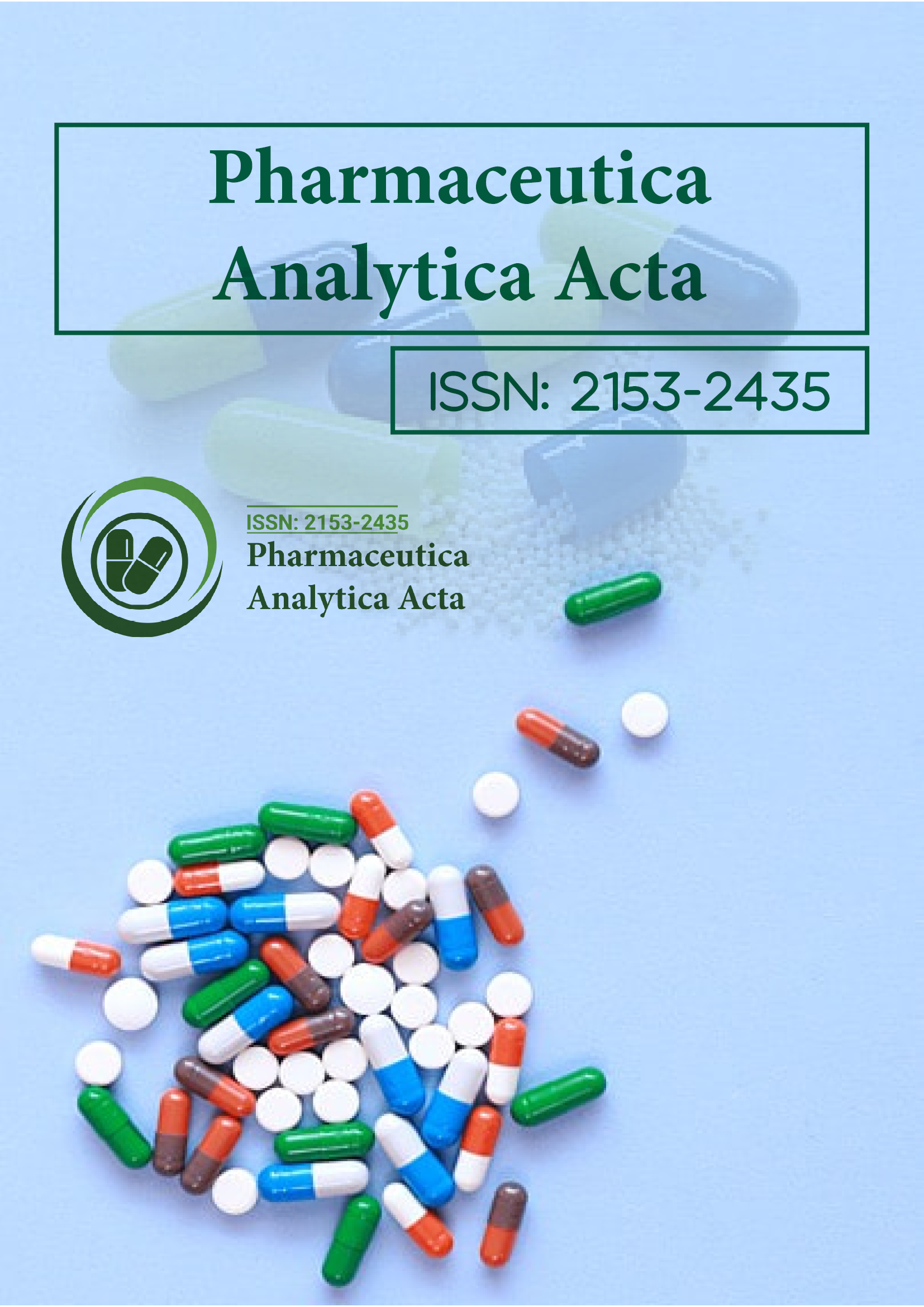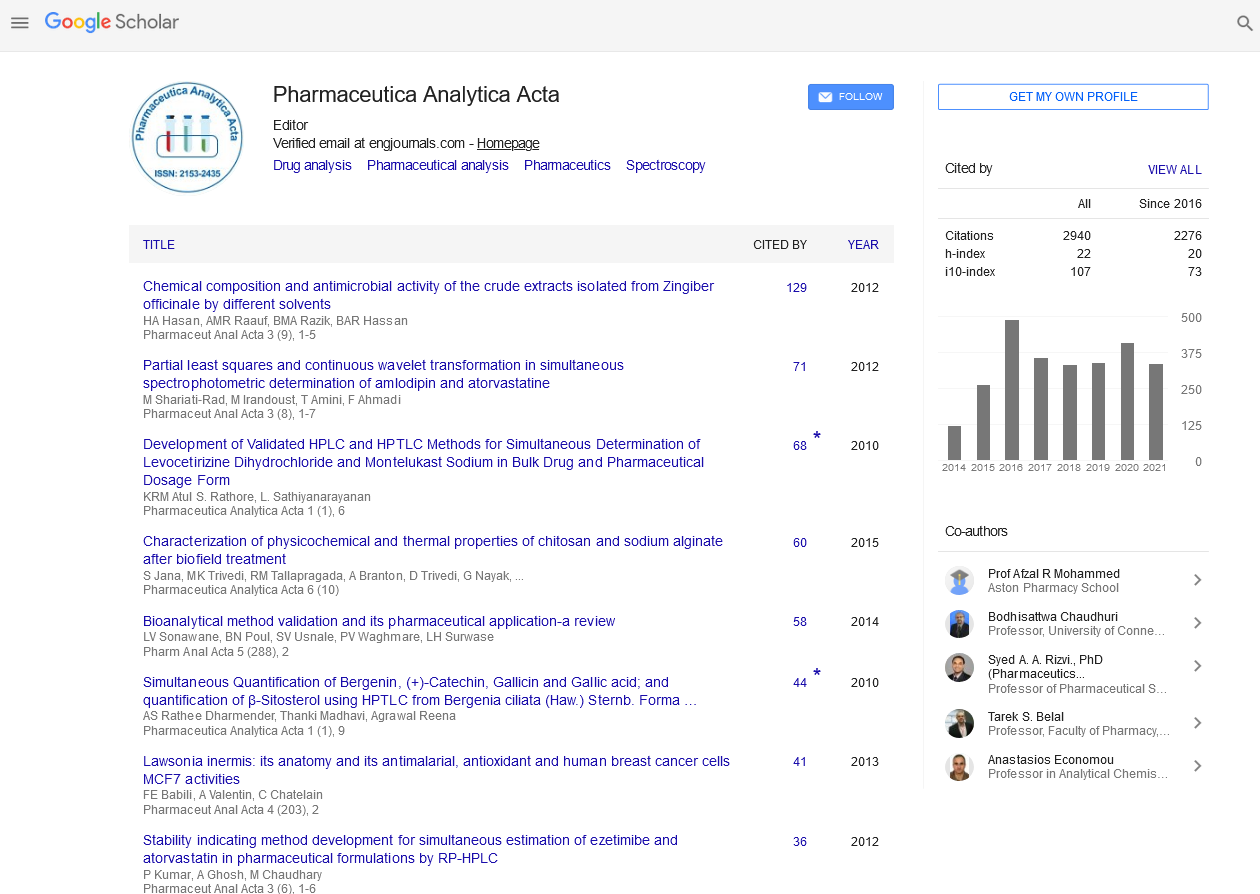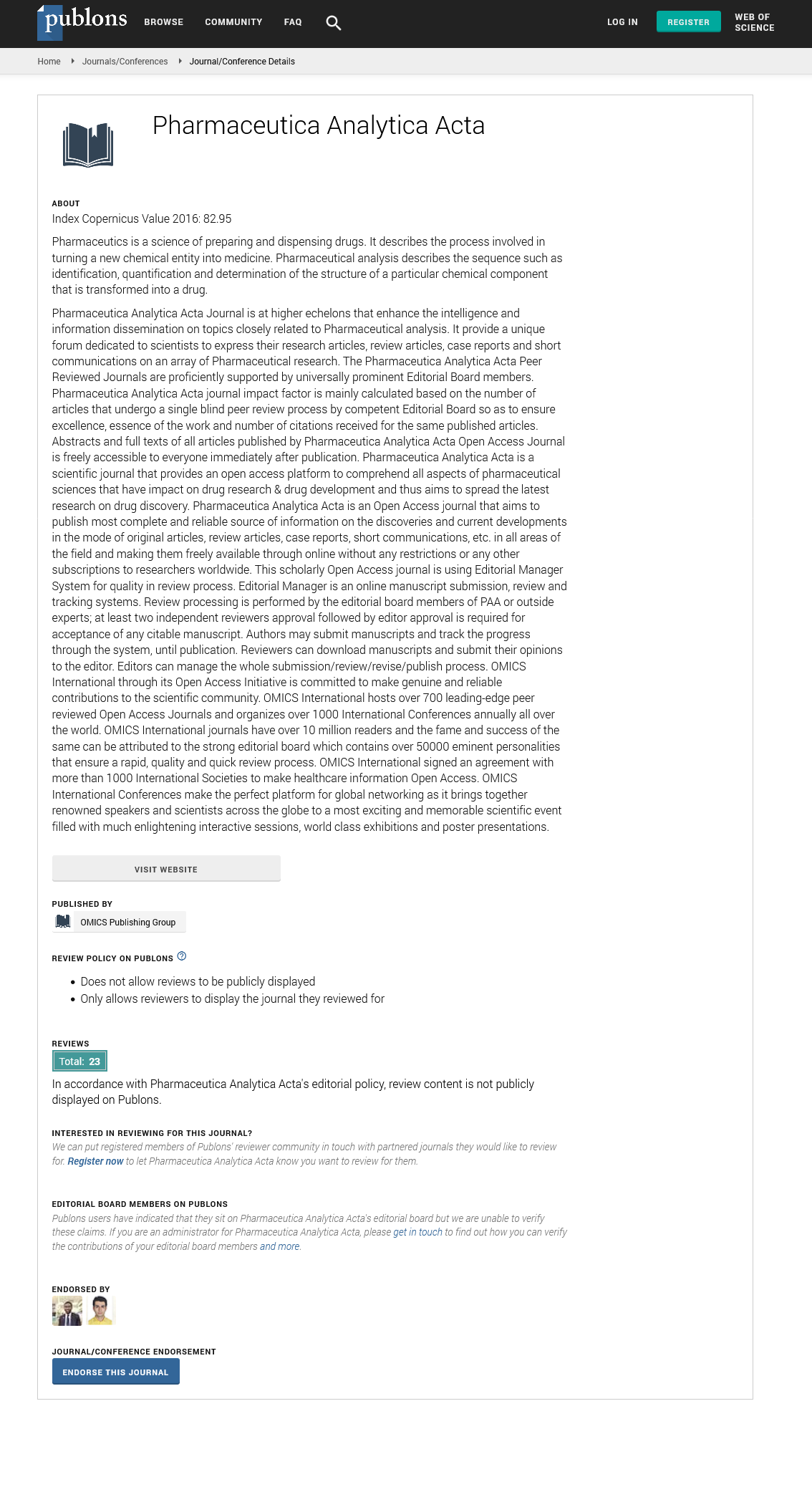Indexed In
- Open J Gate
- Genamics JournalSeek
- Academic Keys
- JournalTOCs
- The Global Impact Factor (GIF)
- China National Knowledge Infrastructure (CNKI)
- Ulrich's Periodicals Directory
- RefSeek
- Hamdard University
- EBSCO A-Z
- OCLC- WorldCat
- Publons
- Geneva Foundation for Medical Education and Research
- Euro Pub
- Google Scholar
Useful Links
Share This Page
Journal Flyer

Open Access Journals
- Agri and Aquaculture
- Biochemistry
- Bioinformatics & Systems Biology
- Business & Management
- Chemistry
- Clinical Sciences
- Engineering
- Food & Nutrition
- General Science
- Genetics & Molecular Biology
- Immunology & Microbiology
- Medical Sciences
- Neuroscience & Psychology
- Nursing & Health Care
- Pharmaceutical Sciences
Perspective - (2023) Volume 14, Issue 6
Airborne Pathogen Detection: Implications for Pharmacological Safety
Kevin Fennelly*Received: 13-Nov-2023, Manuscript No. PAA-23-24913; Editor assigned: 16-Nov-2023, Pre QC No. PAA-23-24913 (PQ); Reviewed: 30-Nov-2023, QC No. PAA-23-24913; Revised: 07-Dec-2023, Manuscript No. PAA-23-24913 (R); Published: 14-Dec-2023, DOI: 10.35248/2153-2435.23.14.761
Description
In the area of pharmaceutical safety, the detection and mitigation of airborne pathogens hold their importance. Airborne pathogens, such as bacteria, viruses, and fungi, pose significant risks to pharmaceutical manufacturing processes, research laboratories, and healthcare settings. Detecting and controlling these pathogens are critical not only for ensuring the quality and efficacy of pharmaceutical products but also for safeguarding the health and well-being of personnel and patients.
Pharmaceutical facilities, including manufacturing plants, research laboratories, and hospitals, require stringent measures to prevent contamination and ensure product quality. Airborne pathogens present a unique challenge due to their ability to spread rapidly and contaminate both surfaces and air. In pharmaceutical manufacturing, airborne pathogens can affect the integrity of drug formulations, leading to product recalls, financial losses, and potential harm to patients. Moreover, in research laboratories and healthcare settings, the presence of airborne pathogens can expose experimental results and pose health risks to researchers, clinicians, and patients.
Detecting airborne pathogens in pharmaceutical environments presents several challenges due to the diverse nature of microorganisms and their varying concentrations in the air. Traditional methods of airborne pathogen detection include air sampling followed by microbial culture or Polymerase Chain Reaction (PCR) analysis. While these methods provide valuable information about the presence of specific pathogens, they are often time-consuming and may not capture real-time data. Additionally, airborne pathogens may be present in low concentrations, requiring sensitive detection techniques with high specificity.
Advancements in technology have led to the development of innovative solutions for airborne pathogen detection in pharmaceutical settings. One such technology is the use of Real- Time Polymerase Chain Reaction (RT-PCR) and Next- Generation Sequencing (NGS) techniques, which allow for rapid and accurate identification of airborne pathogens. RT-PCR enables the detection of specific nucleic acid sequences of pathogens, providing high sensitivity and specificity. NGS, on the other hand, allows for the simultaneous detection of multiple pathogens in a single sample, offering a comprehensive analysis of microbial diversity in the air.
Furthermore, the integration of biosensors and portable detection devices has revolutionized airborne pathogen monitoring, enabling continuous surveillance of pharmaceutical environments. Biosensors utilize specific biological recognition elements, such as antibodies or nucleic acids, to detect target pathogens in real-time. These compact and user-friendly devices can be deployed in various settings, including cleanrooms, laboratories, and hospital wards, to monitor air quality and detect potential microbial threats promptly.
The implications of airborne pathogen detection for pharmacological safety are far-reaching and multifaceted. By implementing robust detection strategies and advanced technologies, pharmaceutical companies can mitigate the risk of product contamination and ensure compliance with regulatory standards. Timely detection of airborne pathogens allows for prompt intervention measures, such as air filtration, disinfection, and personnel training, thereby minimizing the risk of product recalls and adverse events.
Moreover, proactive monitoring of airborne pathogens contributes to a culture of safety and accountability within the pharmaceutical industry. By prioritizing the health and wellbeing of employees and patients, pharmaceutical companies demonstrate their commitment to ethical practices and quality assurance. Additionally, transparent communication regarding airborne pathogen detection efforts enhances trust and credibility among stakeholders, including regulatory agencies, healthcare professionals, and consumers.
In conclusion, airborne pathogen detection plays an important role in ensuring pharmacological safety and product quality in the pharmaceutical industry. By leveraging advanced detection methodologies and emerging technologies, pharmaceutical companies can effectively monitor air quality, mitigate microbial risks, and uphold regulatory compliance. The proactive approach to airborne pathogen detection not only protects the integrity of pharmaceutical products but also protects the health and safety of personnel and patients.
Citation: Fennelly K (2023) Airborne Pathogen Detection: Implications for Pharmacological Safety. Pharm Anal Acta. 14:761.
Copyright: © 2023 Fennelly K. This is an open-access article distributed under the terms of the Creative Commons Attribution License, which permits unrestricted use, distribution, and reproduction in any medium, provided the original author and source are credited.


